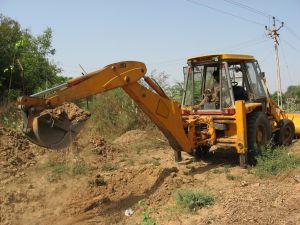Trench work is a part of almost every construction project, as Biz Journals reports. Biz Journals also indicates that trench work is among the most dangerous jobs since all trenches eventually collapse. When a trench does collapse, a worker could end up buried alive under huge amounts of dirt and rubble. The dirt is heavy — with a cubic yard weighing as much as 3,000 pounds — and can kill a worker instantly or trap a worker. 
Because trenches are so dangerous, it is imperative for employers to protect workers that they send down into the trenches. Our Boston workers’ compensation attorneys urge every employer to review Occupational Safety and Health Administration (OSHA ) guidelines on trench safety. By reviewing the information and employing some of the tips and advice described, employers could potentially save lives.
The Dangers of Trench Work
Trench work is risky because of the nature of the job, so it is imperative that employers do everything in their power to make it less dangerous. As OSHA suggests, some possible options for improving workplace safety in trenches include:
- Creating a trench that is designed to reduce the chances of it collapsing or falling on your workers. There are a couple of different ways to do this. For example, a trench could be sloped for stability, which would essentially mean it was dug like a mountain with a little valley in between. It could also be cut to create a stepped bench, which would mean de facto steps were set up along the sides of the trench. This second option would work only with Type A and Type B soil.
- Using a support system made up of posts, beams, planning, shores or hydraulic jacks. This would ensure that the trench cannot collapse down on the worker. Because a full system has to be built, this can add to the cost and time involved in a trench work project.
- Shielding workers in the trench by making use of a trench box. Again, this solution has many of the same problem that using a support system made of brick or wood does. It simply puts the worker in a bubble and it is a costly way to keep a worker safer while performing trench work.
Although none of the above solutions are perfect, they are the suggestions that OSHA offers for helping to ensure a trench is safe.
While these suggestions are meant to provide workers and employers with ideas for trench solutions, OSHA also goes on to impose some firm requirements on employers related to trench work. For example, the OSHA brochure mandates that excavated materials and all other equipment are at least two feet from the trench’s edge. OSHA also mandates that an exit be available for evacuation quickly if need be. The exit should be within 25 feet of where the worker is in the trench.
Following these instruction is essential to making sure workers aren’t injured or killed while they perform their normal routine work tasks. Unfortunately, OSHA reports that two workers are killed per month in trench collapses. These tragic deaths can and should be prevented by taking extra safety precautions in an inherently dangerous industry.
If you or a loved one has been injured or killed on the job, call Jeffrey Glassman Injury Lawyers for a free and confidential consultation to discuss your workers’ compensation case — (617) 777-7777.
 Massachusetts Workers Compensation Lawyers Blog
Massachusetts Workers Compensation Lawyers Blog

